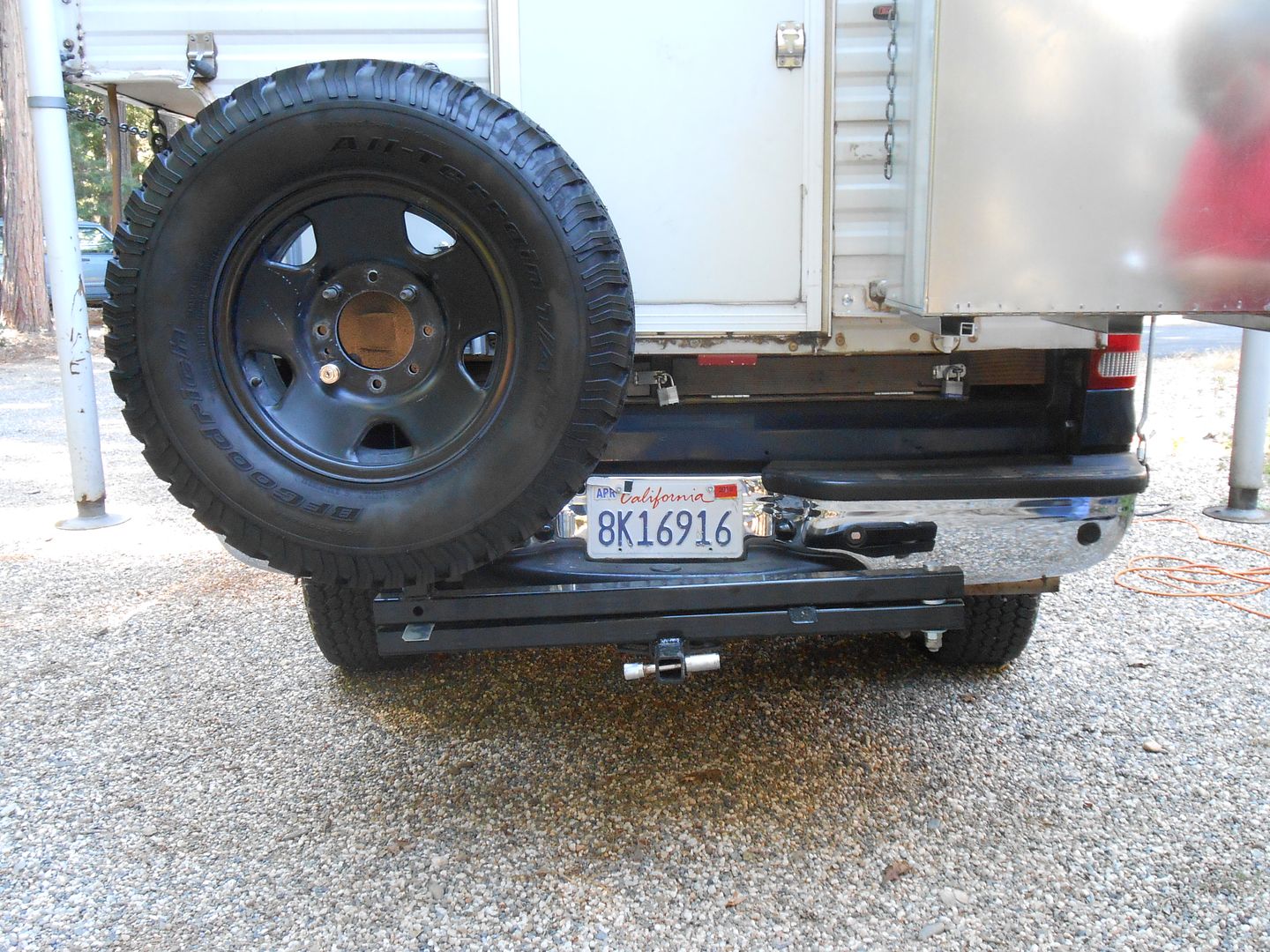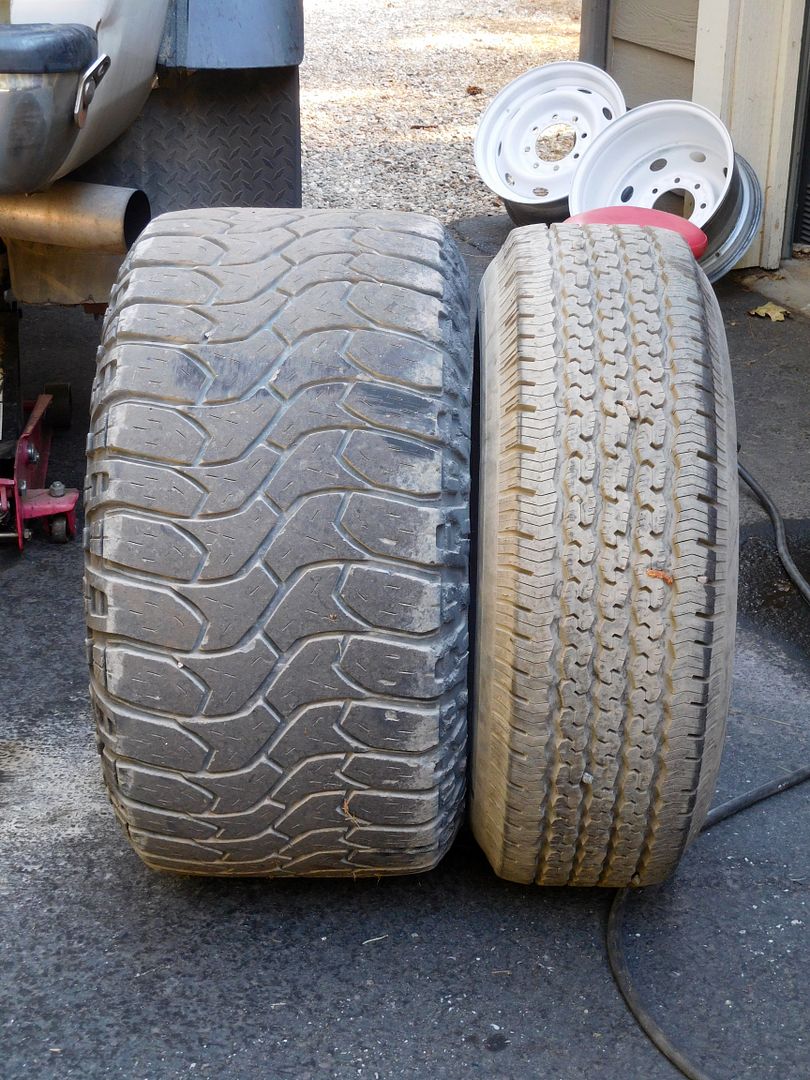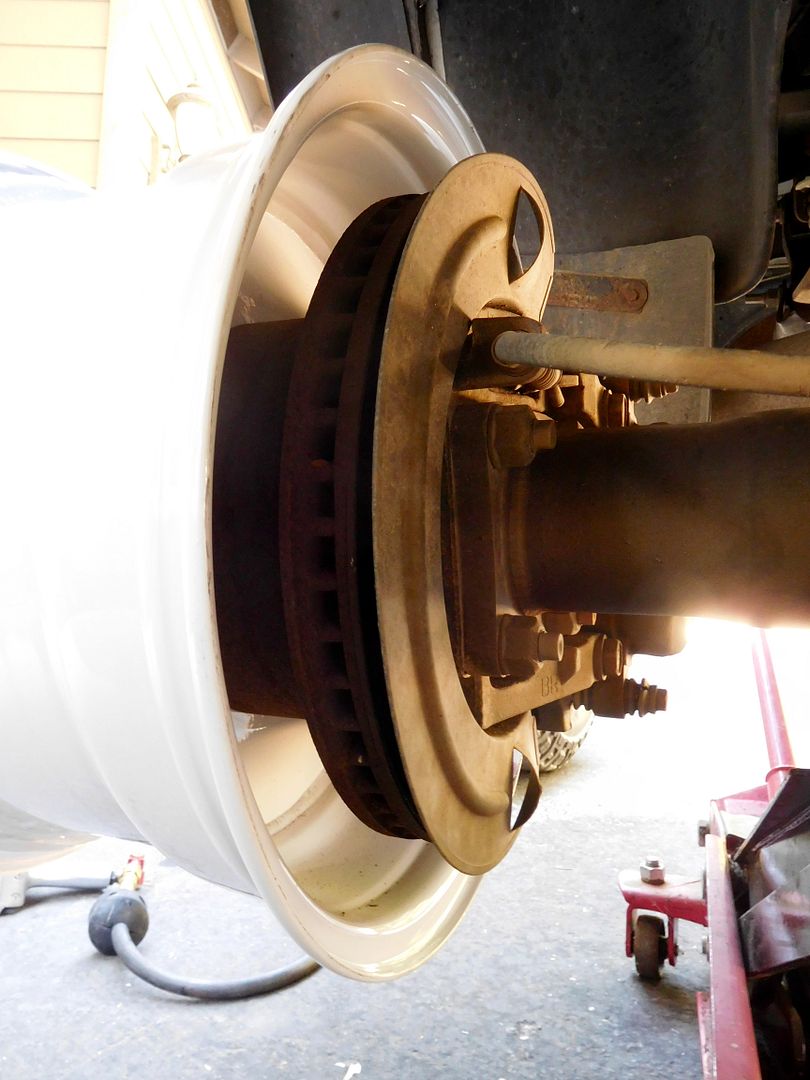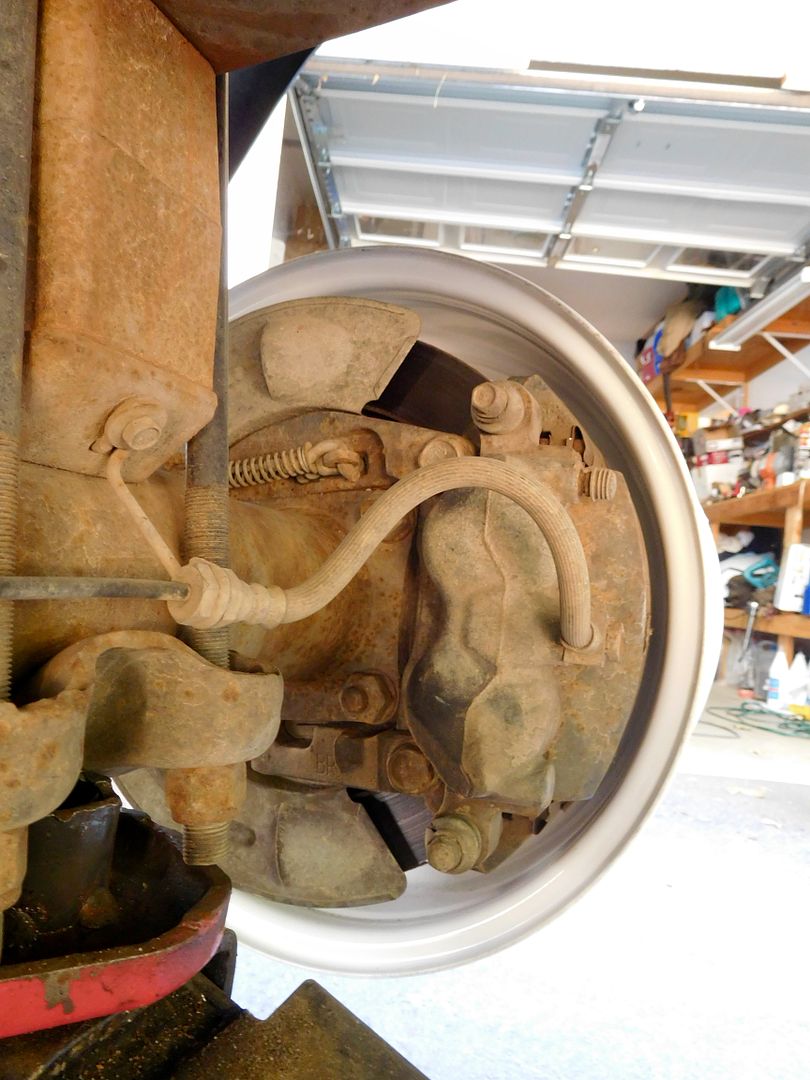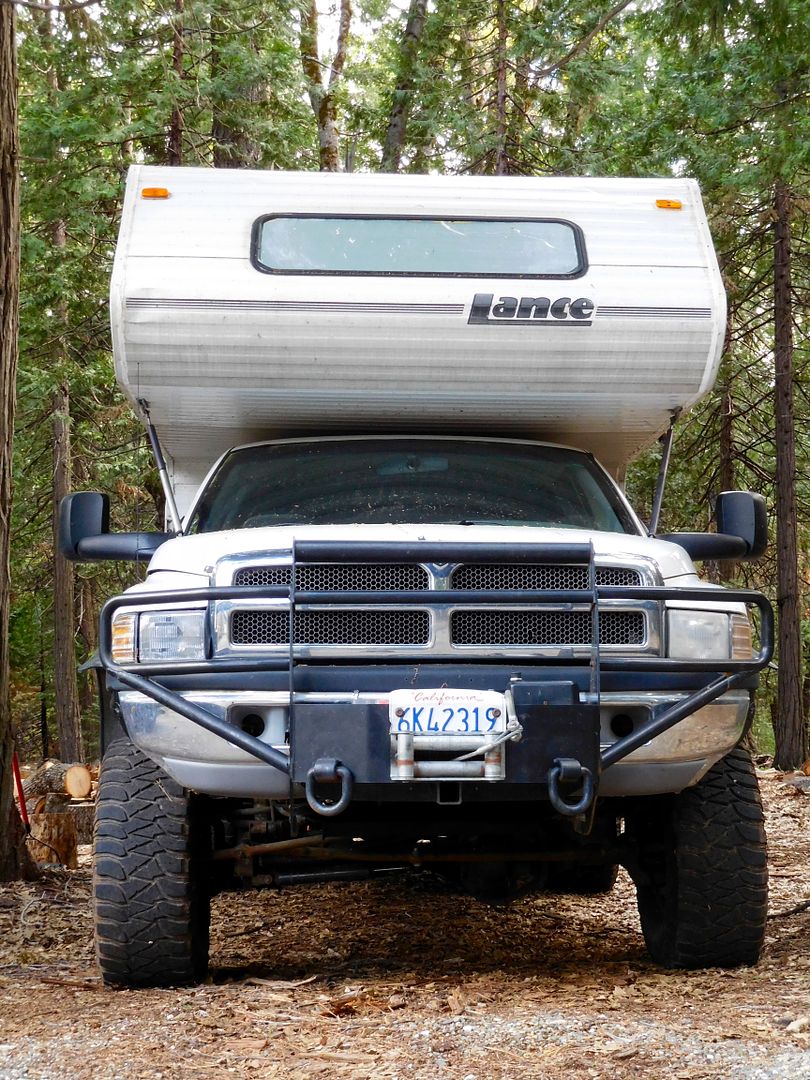Mundo4x4Casa
West slope, N. Ser. Nev.
You don't have to be a mystic to ascertain the best approach to making your truck into a camper hauler. I was over on the Dodge full size thread above and was struck by the wide range of ideas and approaches to so-called, "overlanding" with pickups. Only one guy who bought a brand new Dodge 3500, Scab, SRW, C&C, 4WD, gas truck was in any way focused on making an off-road style truck to actually CARRY a camper. The rest were hot rodders, jeepers, rock crawlers and sundry other trucks that had the cool, OVERLANDING look, and never intended for hauling much of a load. Overlanding to them is taking their, purpose built for looks, 4x4 on a few muddy roads and getting back to the car wash alive. So, i thought this would be a good venue to describe my personal journey to XTC. That's extreme truck camper. But this is about the truck part, the part that gets the most attention.
I come from a long time jeeping/off-roading background that for me was a perfect antidote to working downtown LA playing bass trombone in the Los Angeles Philharmonic Orchestra. For decades we romped the mountains, deserts, and seashores within 1500 miles of LA and sadly watched so many great venues for wilderness travelers slowly disappear. The long bell curve of work/marriage/family/grown family/retirement has come to pass with many worn out 4x4's strewn along the trail. About 15 years ago Jeanie and I decided to buy a diesel truck to pull our tricked-out CJ8 to the trail head. After many close calls flat towing,

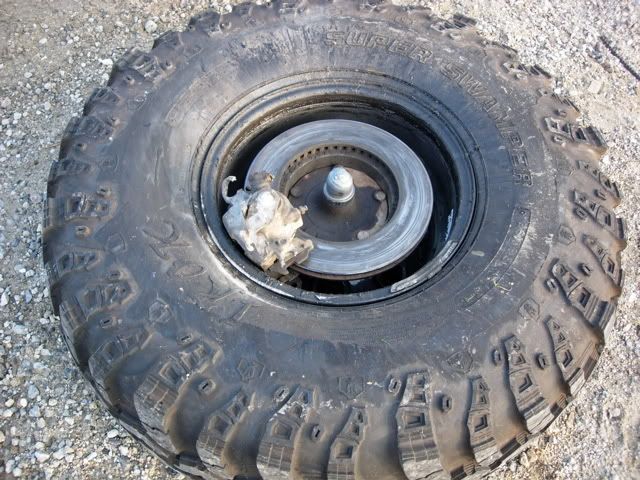
we bought an 1100 pound car trailer, equipping it with pivoting crank jacks for the rear to unload the jeep without ramps, and doing an SOA for clearance.
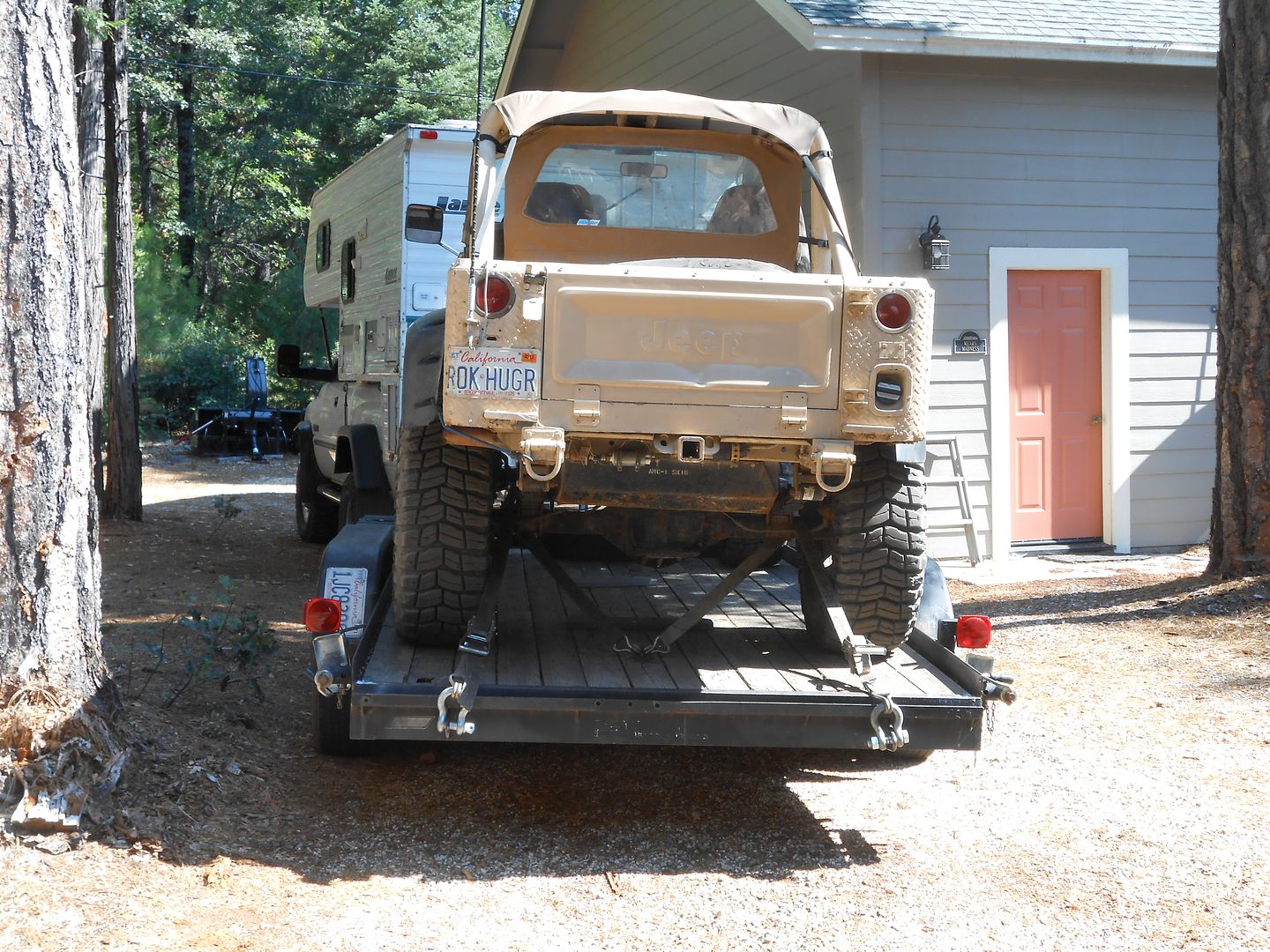
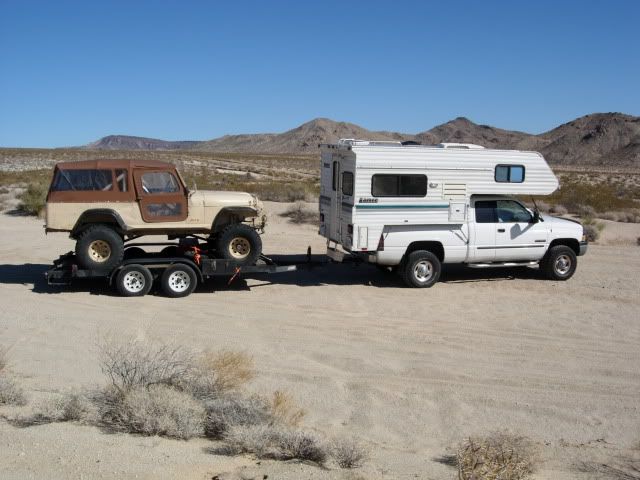
This was my 15th SOA job on some kind of vehicle. We were now getting older and thinking about retirement and were NOT happy about laying on the ground to sleep anymore. I picked up the Recycler (an LA used stuff rag) one day and spied my current Lance 165-s camper for sale. It was then housed on a short bed Dodge 1500 with airbags. Used 3 times. 3 years old. $6500 cash. By the end of the day money changed hands I owned it. It was almost all stock in 2001:
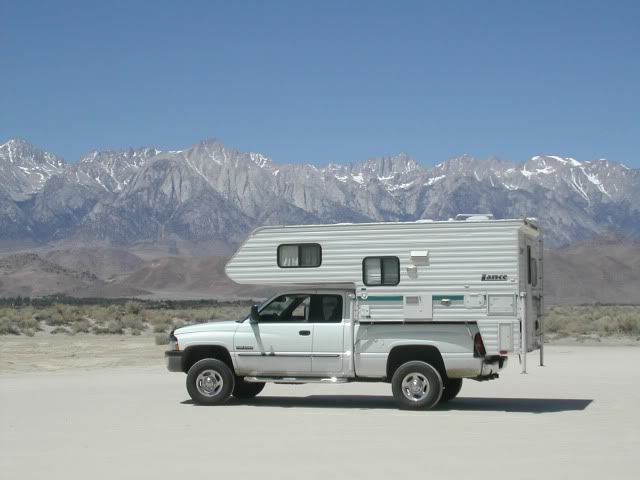
Last year I added 200 W of solar, replaced the converter/new battery, and reinsulated the box. With minor woes I've been happy with it. We are now up to about 240 overnights in it.
Back to the truck. In 2001 we bought the brand new short bed truck because a long bed would not fit in the subterranean, corkscrew driveway parking structure at the music center in LA. It was made for Benz' and Ferrari's. The major reason I bought it was because the then new model 2001.5 had disc brakes all around; a Dana 80 full floating, 35 spline rear axle (not the 30 spline up to then) with an 11,000 pound weight rating; Dana 60 powered front axle with 32 spline axles and either a 6K or 6500 pound axle rating; the first year of the High Output Cummins with higher compression ratio:17:1; 245 HP/505 TQ @ 1600 rpm; the then new NV5600, 360 pound, cast iron case, six speed manual transmission (which is now almost obsolete), Ratios: 5.63/3.38/2.04/1.39/1.00/0.73/R5.63; the NV241HD transfer case (HD means it had the wide chain to combat the effects of shock loading common with snow plow work, but still the same output bearing giving it no more strength there). So, all these upgrades were somewhere in the drivetrain...so I pounced.
Over time, I added:
Solid Steel Industrial Mfg. steering box brace. This helped the 'wander' of the front end on truck lane pavement.
Top Gun Customz Dodge Ram zirked control arms (4-links) built for a 6" lift but installed on a 3" lift front end. Why? The effect was to position the front axle 1-1/2 inches forward of stock to give a bit more fender clearance for 35" tires.
4 inch exhaust system with resonator delete. My original exhaust system was eaten by the soda and salt flats of the Mojave Road
Vulcan Big line Pusher Pump Kit relocating the lift pump to the frame in front of the fuel tank essentially making it a pusher instead of a sucker.
Upgrade lift/ transfer pump with higher volume.
replaced fuel tank sending unit.
K&N Filtercharger
added short tube on the turbo waste gate to engage turbo at a lower rpm.
Low fuel pressure alarm system (idiot light goes on when the pressure drops below 5 pounds.)
SpynTec Dodge Dana 60 Hub conversion kit, inner spindle bearing ket, new spindles, new wider spaced Timken bearings, hub seals, Dana 70, 35 spline outer stub shafts, Mile Marker Dana 70 lockout hub assy, factory ABS sensors and studs.
Front axle disconnect delete. Front unit bearing delete. The Chrysler unit bearing is un rebuildable and prone to early retirement when using wide wheels.
Front 35 spine Eaton Detroit True Trac torque biasing, gear driven limited slip differential. *This was purchased before I found out that Chrysler used 32 spline axles from the late 90's to about 2002. Everything that moved in the front diff had to be upgraded to fit other 35 spline parts. The only 'bad' things left in the front end are the ball joints. I replaced these and they are fine now. These are the 'factory-saved-2-cents-by-using-ball-joints' instead of king pins like the Fords use.
Mosier 35 spline front Dana 70 long and short front axle shafts. Except for the housing and the RGP, all the front end parts are now Dana 70 spec.
Generation 4 tie rod, drag link, TRE's, and pitman arm. New anti-sway bar bushings all around.
new steering stabilizer. 4Wheel Parts stiff single action shocks front.
7-1/2"x16" steel front wheels. 6.25" back spacing. these keep the off set leverage at a sane number and don't eat up your wheel bearings quite so fast.
Dana 80/35 spline rear axle fitted with a Power Lok limited slip with high preload, cone shaped clutch plates. This is very stiff and will chirp on corners if the truck is unloaded.
8 leaf rear springs: 3 upper secondaries (aka: overloads), with one helper spring in the 5-spring main pack. Rancho 9K's. Stable Loads (those composite black blocks that engage your secondaries sooner with a load).
16"x10" 'Power Wagon' Stockton steel rear wheels (1/2" plate center hubs) with a 4-1/2" back spacing. These widen the rear track giving potentially more stability on side hills. They have a stupid high load rating and are heavy. The negative is they add unsprung weight which eats into your acceleration and stopping distance.
New factory clutch, T.O. bearing, pilot, and engine rear main seal @164,702 miles.
Warn Transformer winch carrier, Warn #30092 transformer grill guard with added tubing and radiator saver. Warn fairlead: #69604. Warn foot forward winch mount: #62027. Warn 15,000 pound winch with 90' of 1/2" wire rope
I've had a series of tires and wheels that worked variously well. I was not happy with the stock aluminum wheels as they were cast not machined, so had little abrasive protection against rocks. I've cracked and chipped some of those. Now trying all steel wheels.
On my present steel wheels I now have 315/75R16 Cooper AT3, E rated, for 8"-11" rim, 12.4" wide carcass, 34.49" diameter, 9.8" wide tread, 3860 pound capacity. This last number is the most important. I'll not be getting close to the 7720 pound max tire loading on the rear axle. These were chosen as the best compromise between long life highway, off road and snow what with the larger blocks and smaller voids. Below is a shot i took yesterday with cut down TJ fender flares and mud guards to match the narrower wheels/tires. What's up with all that rubber? In two words: wooden frame. I'm trying to keep the road spray from seeping into the camper. I've also rubber spray coated much of the bottom and lower sides of the camper itself. But, that's another story.

jefe
I come from a long time jeeping/off-roading background that for me was a perfect antidote to working downtown LA playing bass trombone in the Los Angeles Philharmonic Orchestra. For decades we romped the mountains, deserts, and seashores within 1500 miles of LA and sadly watched so many great venues for wilderness travelers slowly disappear. The long bell curve of work/marriage/family/grown family/retirement has come to pass with many worn out 4x4's strewn along the trail. About 15 years ago Jeanie and I decided to buy a diesel truck to pull our tricked-out CJ8 to the trail head. After many close calls flat towing,


we bought an 1100 pound car trailer, equipping it with pivoting crank jacks for the rear to unload the jeep without ramps, and doing an SOA for clearance.


This was my 15th SOA job on some kind of vehicle. We were now getting older and thinking about retirement and were NOT happy about laying on the ground to sleep anymore. I picked up the Recycler (an LA used stuff rag) one day and spied my current Lance 165-s camper for sale. It was then housed on a short bed Dodge 1500 with airbags. Used 3 times. 3 years old. $6500 cash. By the end of the day money changed hands I owned it. It was almost all stock in 2001:

Last year I added 200 W of solar, replaced the converter/new battery, and reinsulated the box. With minor woes I've been happy with it. We are now up to about 240 overnights in it.
Back to the truck. In 2001 we bought the brand new short bed truck because a long bed would not fit in the subterranean, corkscrew driveway parking structure at the music center in LA. It was made for Benz' and Ferrari's. The major reason I bought it was because the then new model 2001.5 had disc brakes all around; a Dana 80 full floating, 35 spline rear axle (not the 30 spline up to then) with an 11,000 pound weight rating; Dana 60 powered front axle with 32 spline axles and either a 6K or 6500 pound axle rating; the first year of the High Output Cummins with higher compression ratio:17:1; 245 HP/505 TQ @ 1600 rpm; the then new NV5600, 360 pound, cast iron case, six speed manual transmission (which is now almost obsolete), Ratios: 5.63/3.38/2.04/1.39/1.00/0.73/R5.63; the NV241HD transfer case (HD means it had the wide chain to combat the effects of shock loading common with snow plow work, but still the same output bearing giving it no more strength there). So, all these upgrades were somewhere in the drivetrain...so I pounced.
Over time, I added:
Solid Steel Industrial Mfg. steering box brace. This helped the 'wander' of the front end on truck lane pavement.
Top Gun Customz Dodge Ram zirked control arms (4-links) built for a 6" lift but installed on a 3" lift front end. Why? The effect was to position the front axle 1-1/2 inches forward of stock to give a bit more fender clearance for 35" tires.
4 inch exhaust system with resonator delete. My original exhaust system was eaten by the soda and salt flats of the Mojave Road
Vulcan Big line Pusher Pump Kit relocating the lift pump to the frame in front of the fuel tank essentially making it a pusher instead of a sucker.
Upgrade lift/ transfer pump with higher volume.
replaced fuel tank sending unit.
K&N Filtercharger
added short tube on the turbo waste gate to engage turbo at a lower rpm.
Low fuel pressure alarm system (idiot light goes on when the pressure drops below 5 pounds.)
SpynTec Dodge Dana 60 Hub conversion kit, inner spindle bearing ket, new spindles, new wider spaced Timken bearings, hub seals, Dana 70, 35 spline outer stub shafts, Mile Marker Dana 70 lockout hub assy, factory ABS sensors and studs.
Front axle disconnect delete. Front unit bearing delete. The Chrysler unit bearing is un rebuildable and prone to early retirement when using wide wheels.
Front 35 spine Eaton Detroit True Trac torque biasing, gear driven limited slip differential. *This was purchased before I found out that Chrysler used 32 spline axles from the late 90's to about 2002. Everything that moved in the front diff had to be upgraded to fit other 35 spline parts. The only 'bad' things left in the front end are the ball joints. I replaced these and they are fine now. These are the 'factory-saved-2-cents-by-using-ball-joints' instead of king pins like the Fords use.
Mosier 35 spline front Dana 70 long and short front axle shafts. Except for the housing and the RGP, all the front end parts are now Dana 70 spec.
Generation 4 tie rod, drag link, TRE's, and pitman arm. New anti-sway bar bushings all around.
new steering stabilizer. 4Wheel Parts stiff single action shocks front.
7-1/2"x16" steel front wheels. 6.25" back spacing. these keep the off set leverage at a sane number and don't eat up your wheel bearings quite so fast.
Dana 80/35 spline rear axle fitted with a Power Lok limited slip with high preload, cone shaped clutch plates. This is very stiff and will chirp on corners if the truck is unloaded.
8 leaf rear springs: 3 upper secondaries (aka: overloads), with one helper spring in the 5-spring main pack. Rancho 9K's. Stable Loads (those composite black blocks that engage your secondaries sooner with a load).
16"x10" 'Power Wagon' Stockton steel rear wheels (1/2" plate center hubs) with a 4-1/2" back spacing. These widen the rear track giving potentially more stability on side hills. They have a stupid high load rating and are heavy. The negative is they add unsprung weight which eats into your acceleration and stopping distance.
New factory clutch, T.O. bearing, pilot, and engine rear main seal @164,702 miles.
Warn Transformer winch carrier, Warn #30092 transformer grill guard with added tubing and radiator saver. Warn fairlead: #69604. Warn foot forward winch mount: #62027. Warn 15,000 pound winch with 90' of 1/2" wire rope
I've had a series of tires and wheels that worked variously well. I was not happy with the stock aluminum wheels as they were cast not machined, so had little abrasive protection against rocks. I've cracked and chipped some of those. Now trying all steel wheels.
On my present steel wheels I now have 315/75R16 Cooper AT3, E rated, for 8"-11" rim, 12.4" wide carcass, 34.49" diameter, 9.8" wide tread, 3860 pound capacity. This last number is the most important. I'll not be getting close to the 7720 pound max tire loading on the rear axle. These were chosen as the best compromise between long life highway, off road and snow what with the larger blocks and smaller voids. Below is a shot i took yesterday with cut down TJ fender flares and mud guards to match the narrower wheels/tires. What's up with all that rubber? In two words: wooden frame. I'm trying to keep the road spray from seeping into the camper. I've also rubber spray coated much of the bottom and lower sides of the camper itself. But, that's another story.

jefe
Last edited:

